Learning to grow, harvest and store your own crop of potatoes is one of the easiest ways to produce lasting food from your garden.
Unlike tomatoes, cucumbers and many other garden vegetables, potatoes don’t require canning or freezing for long term storage. In fact, once harvested and cured, all they really need to keep for months is a cool, dark storage space.
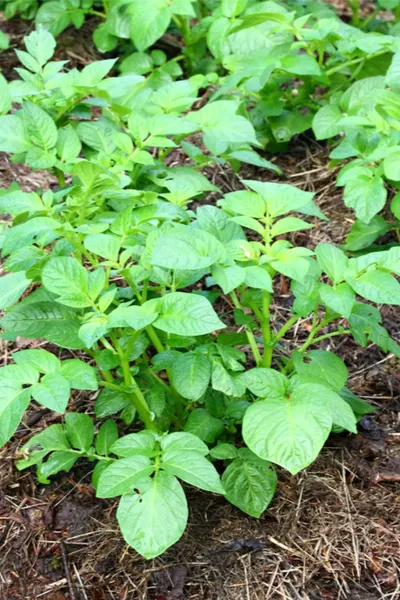
Here is a look at the simple basics of harvesting and preserving a potato crop.
How To Harvest, Cure & Store Potatoes
Harvesting Potatoes
When you harvest your potatoes makes a big difference in how they will store. Potatoes can actually be harvested at any point during the growing season – but need to be mature when trying to store.
Harvesting potatoes when plants are still green up on top results in “new” potatoes. Although delicious, new potatoes can’t be cured and stored, as they haven’t developed enough to keep.
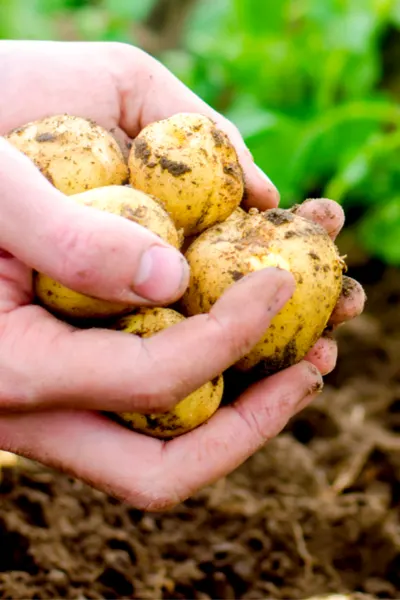
To be able to store potatoes through the long winter months, you need to allow the plants to brown off and die back. This lets the potatoes fully mature and develop the skins needed for storing.
Curing Potatoes
Before storing, potatoes need to go through a process called curing. Curing allows the potatoes to heal nicks and small blemishes, and dry out a bit to prevent rot.
Proper curing all begins at harvest time. Begin by harvesting when the soil is dry, and not moist or wet from recent rains. The drier the soil the better, as the potatoes will shed off most of the dirt.
When wet, the dirt actually hinders the drying of the potatoes, and results in poor storing of the crop.
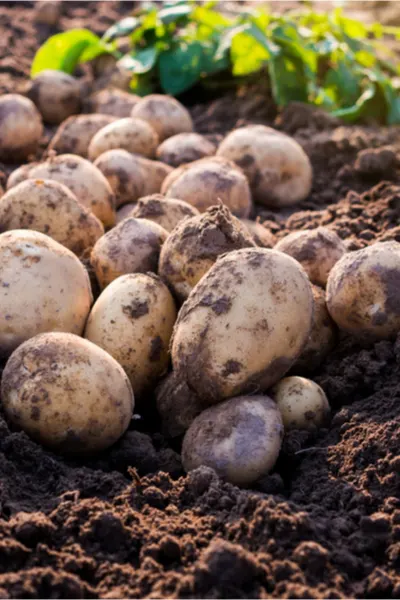
When first digging up your crop, allow the potatoes to sit in the sun for a few hours to help start the drying. As you collect them, lightly brush off any dirt or soil, being careful not to damage skins.
Next, move your potatoes to a cooler, covered location and spread out to cure. Garages, back porches and even barns will work well for curing.
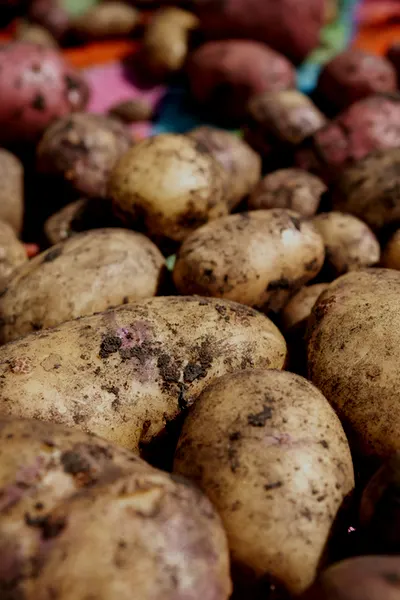
At this point, it is okay to have a bit of humidity in your storage location, as it helps in the curing process. Using a screen or a harvest rack to have good air flow will help greatly. See: How To Create A Simple DIY Harvest Rack
It will take about 10 days in total to cure your potatoes before placing them in long term storage.
Storing Potatoes Long Term
When it comes to successfully storing potatoes, there are two big keys to success, cool temperatures, and darkness. For best results, you never want the temperature to rise above 60 to 65 degrees, or fall below 40.
In addition, using mesh bags or containers that keeps moisture from getting to the potatoes helps keep the potatoes from rotting as well. (Product Link : Mesh Storage Bags)
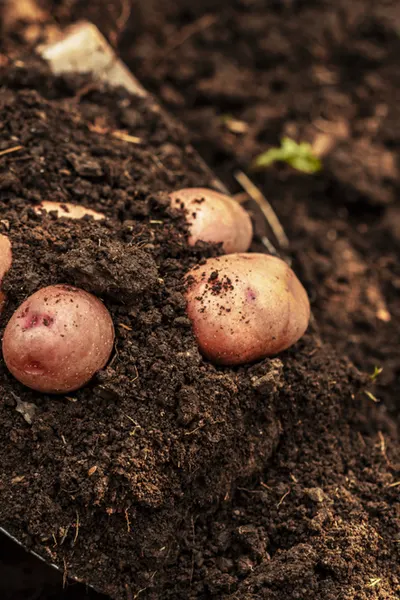
Basements are usually a good option for homeowners, but they need to be dry. A wet, musty basement will result in potatoes that can rot easily.
But of equal importance, keep any light from hitting your potatoes. If potatoes receive too much light, they begin to develop a toxin that turns the potatoes green. When this happens, the potatoes are harmful if the green portion stays on before eating.
Another option to help keep the potatoes cooler and dark is to store them in sand or sawdust. This helps to keep the potatoes dry and dark all at the same time.
Here is to harvesting and storing your own crop of potatoes this year!

This Is My Garden is a website dedicated to spreading the love and knowledge of gardening around the world. We publish two new garden articles each week. This article may contain affiliate links.
